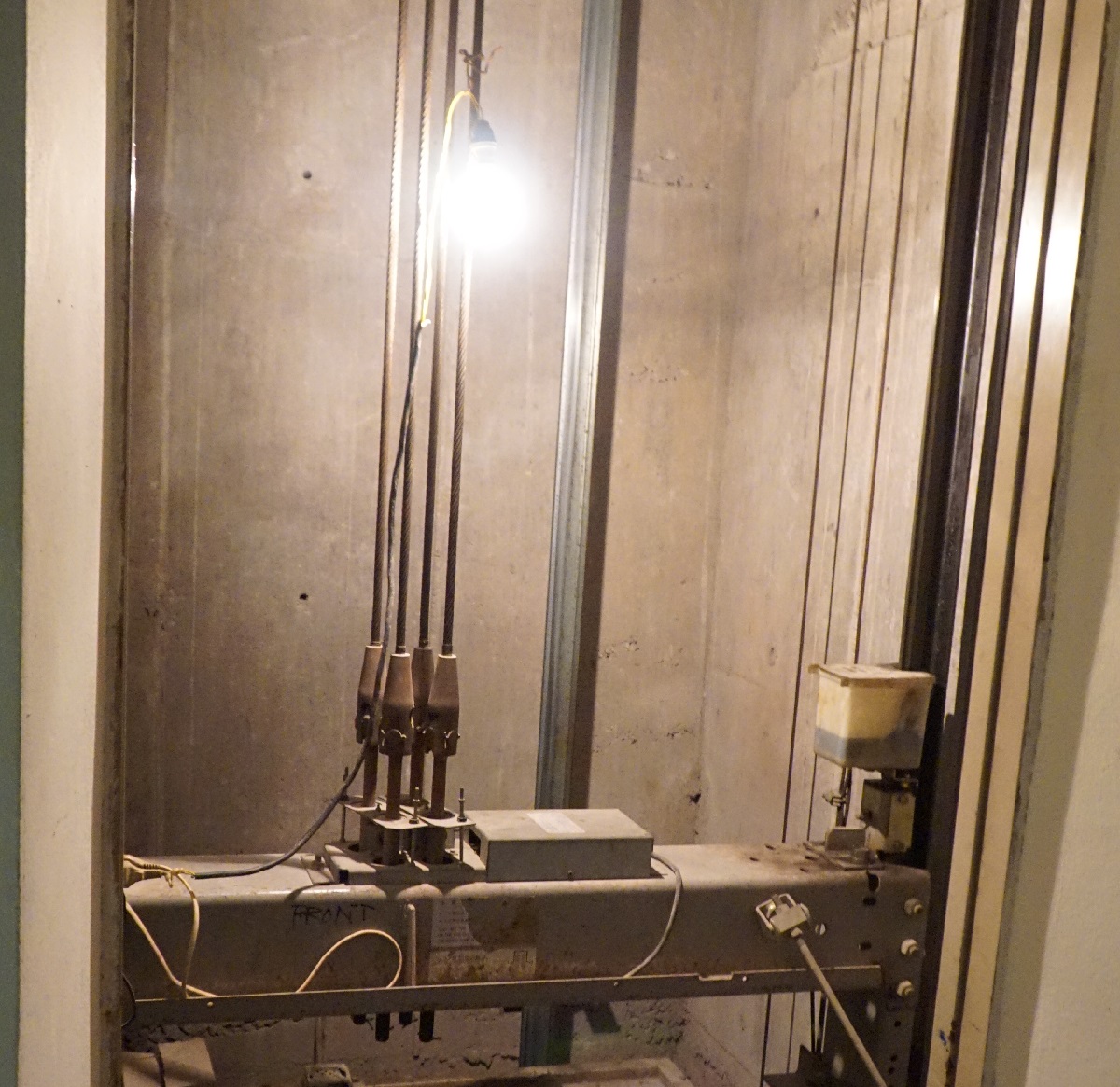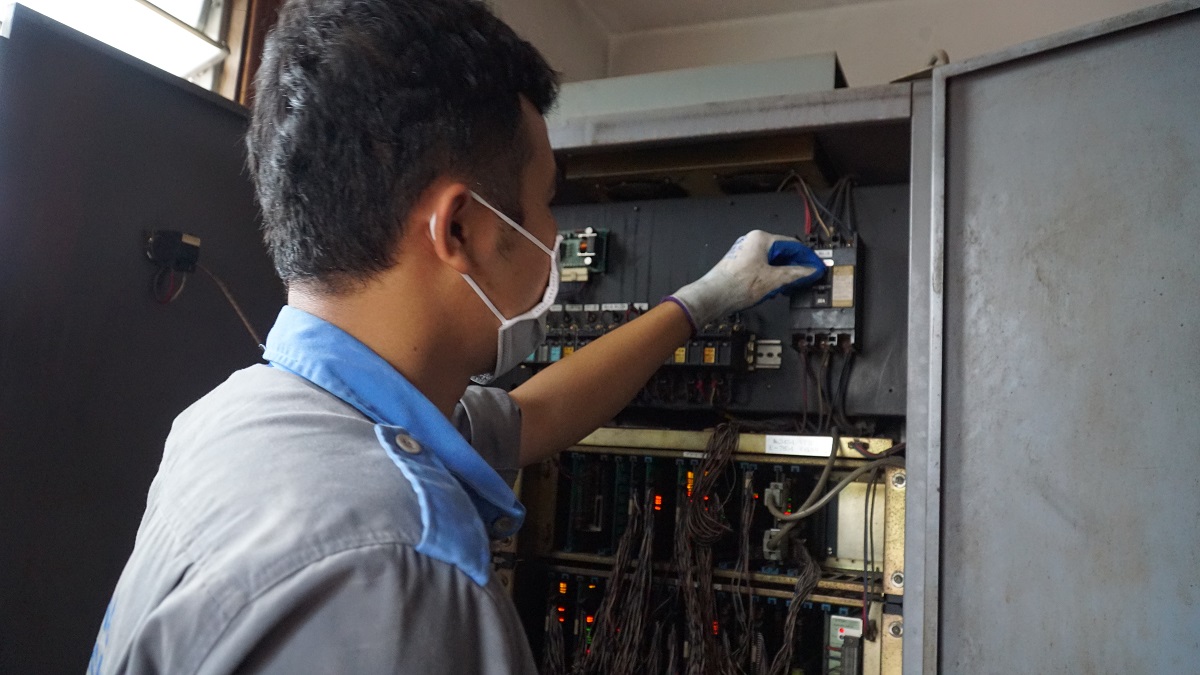EM – Each different area related to the elevator system has its own characteristics of space and separate occupational safety properties. Elevator technicians need to be aware of the requirements of each location in order to have a plan to work safely with elevators.
General guidelines when working on elevators
When performing work on elevators, it is necessary to strictly follow the specific safety recommendations and practices set forth by the manufacturer and the state.
– Passengers are not allowed to stay in the cabin and always close the cabin, unless there are workers working inside.
– It is necessary to provide enough light for the works. Workers, along with the safety area created before entering the pit or the roof of the car, should ensure that the lift area is lit. Flashlights or hazard warning lights (battery-powered) should be provided for workers working inside the shaft, except in case of an emergency.
– Lifts must be decommissioned and locked before any inspection, cleaning, oiling or lubrication of ropes and moving parts is carried out. The car must be secured to prevent movement before removing the slings or repairing any electrical/hydraulic lift support systems.
– When multiple lifts are installed in a common lift shaft, partitions of suitable height should be provided between adjacent lifts, where possible, to prevent entrapment hazards. It is necessary to comply with the requirements of partitions in the issued regulations.
– If access to the shaft is required, clear and safe access must be provided prior to entry and the means must be easily accessible from the workplace.
– The number of people working at the same time in the elevator shaft must be kept to a minimum. The simultaneous use of different workers working independently of each other should be avoided if possible.
– Any item of equipment for dismantling must be lowered under control and not under any circumstances.
– Guards should be installed immediately after maintenance work on hazardous parts of any machinery has ended.
– Elevator must not be allowed to return to normal operation when the job is finished unless it is ascertained that there are no people, tools, or equipment in the shaft. All equipment and facilities for servicing, maintenance or installation as support equipment should be returned to their proper locations.
– For the safety of workers performing installation work, up-to-date installation instructions and drawings, such as plant layouts, equipment layouts, wiring diagrams, etc., must be properly kept and referenced at work.
– Regarding the operation and maintenance of the elevator/escalator installation, operation and maintenance manuals, operation/maintenance log books, working procedures, checklists, etc. are essential elements. Along with the constructed diagrams, including wiring diagrams, hydraulic circuit diagrams, process diagrams, etc., they must be properly maintained in the workplace and referenced by all workers to ensure safety.

Elevator maintenance logs should be kept in the elevator file to aid in diagnosing the condition of the elevator. Image of a maintenance log of an elevator installed since 1996
Safety instructions when working on the roof of the cabin
– A stopping device must be located above the car, within 1m of the stop and can be operated from the stop. Conventional elevator control circuits must be isolated before any worker approaches the car roof from a stop.
– In cases where the space above the car is smaller than the current standard requirement or can accommodate only one person, a warning sign must be placed in a conspicuous position near the upper control station.
– There must be handrails with a height of 0.9m to 1.15mm on the roof of the cabin, where workers can fall through the gap between the cabin and the shaft. Such handrails must be sufficiently strong and secure.
– Appropriate safety signs and notices must be displayed in a conspicuous place on the roof of the car if the car does not have safety devices or hydraulic pressure relief valves to warn workers.
– Means shall be provided to interrupt the normal control circuitry to prevent movement of the car when the door is held in the open position.
– Check the effectiveness of the controller on the roof of the car before starting work.
– Always keep the number of people in the elevator to a minimum. Workers must stand away from moving ropes, barriers or other moving objects. Special attention should be paid to places with curved or arched tops.
– One and only one person should be appointed to control the movement of the elevator when workers work on the roof. All workers need to understand the procedures for actuating the movement of elevators.
– The roof of the cabin must be clean, free from grease and have a solid structure. It is forbidden to stand on the exit cover of the cabin, it is recommended to clean up and clean the cabin before and after work.
– Workers must firmly cling to the crossbar or other rigid parts of the cabin structure when the car is in motion. Holding rope can cause serious injury, so it is not allowed.
– As a general rule, the roof of the car must be accessed from the landing platform of the terminal.
Safety instructions for working under elevators
Before entering the pit, it is necessary to check the effectiveness of the stopping devices of the elevator.
– If there is no direct access door to the pit, suitable means of safety with handles shall be provided to access the pit from the lowest platform.
– When working under elevators with spaces that can only accommodate one person, properly set up equipment before entering the pit. Safety instructions for working under elevators.
– A counterweight barrier of an appropriate height above the pit floor should be provided to avoid hazards caused by the counterweight moving down. It is necessary to comply with the prescribed height requirements.
– Workers must activate the stop switch to prevent any movement of the elevator before entering the pit.
– No worker may enter or work in a pit with standing water.
– Workers’ shoes must be grease-free to avoid slipping. Watch out for potential hazards such as oil lines or tank holes. In this regard, the warning/notice signs P should be placed in a conspicuous position in the pit.
Safety instructions when working on landing hall.
When workers are involved in elevator maintenance and inspection, sometimes the exit door has to be opened even when the elevator is not there, e.g. to enter the pit or to the roof of the car. In this case, it is recommended to use suitable specialized equipment instead of conventional hand tools to hold the door in the open position. To protect workers at work, it is necessary to design fences/barricades with a height of 0.9m to 1.15m with a handrail in the middle with a height of not less than 0.2m erected in front of the entrance of the elevator.
– The fence/barricade must have relevant safety signs and signs in both Chinese and English to warn of the danger of removing the fence.
– Determine the size limits of the installations in the aisles as shaft as the associated equipment in the engine room.
– When the elevator is not in the normal position at stop (over the floor?), only unlock or open the door if absolutely necessary. It should be checked to ensure that the exit door is closed and locked after each use.
– If there is no cover/barrier and warning sign, the stop door must be closed at all times, except for short periods of time when workers enter/exit the shaft at the stop or transport materials for work.
Safety instructions when working in the machine room
– Safe means of access to the engine room and pulleys should be provided, and warning signs should be posted outside the machine room doors. Additional permanent warning signs must be displayed inside the room adjacent to the trapdoor when the entrance to the room is through the trapdoor.
– There must be adequate electrical lighting inside the rooms and reaching the equipment. All fixed lighting systems must be controlled by a switch inside the room to ensure the lighting standards in the regulations.

Additional power source to ensure brightness in closed, dimly lit working locations such as machine room, cabin roof, shaft
– All hazardous parts of the entire elevator should be effectively shielded to avoid injury to workers performing elevator installation, repair or maintenance work. A hazardous part of the machine for which the location, construction or nature of the work being performed on it does not create any danger to the safety of the repair worker should not be covered.
– Properly designed, installed and maintained elevator equipment should ensure that it can withstand heavy equipment loads. Facilities must be tested and inspected. Safe working loads of lifting equipment and lifting gears shall be clearly marked in accordance with the Regulations. Under no circumstances should these lifting vehicles be operated beyond their safe working load.
– Standard insulating rubber mats should be placed on the floor in front of the controller and other electrical panels and preferably behind these devices to increase the ability to prevent electric shock for technicians.
– The size of any holes in slabs and floors must be reduced to a minimum. Suspension rods at least 0.5m above the floor are required to prevent objects from falling through holes located above the shaft.
– The floor of the machine room should be made of non-slip material to avoid any risk of tripping, preferably on the same flat surface. If the floor has many levels and the levels differ from each other by more than 0.5m, stairs or steps and guardrails must be arranged along the levels.
– If it is not convenient to access the main switch of the lift from the lift or the controller, a suitable stopping device should be installed near the lift. The requirements for stopping devices should be observed as specified. A mains supply disconnector must also be installed on or next to the control unit. In more than one appliance installed in the same machine room, stopping devices shall also be located adjacent to the relevant pulleys.
– Before starting work, it is necessary to check carefully to clearly determine the types of equipment to be used and the equipment attached. Do not perform work on the equipment while the elevator is in motion or the equipment is in danger of disrupting movement.
– Updated wiring diagrams, hydraulic circuit diagrams, electrical circuit diagrams, etc. of the elevator system must be provided to repair workers for reference before starting work.

Technicians must be careful with power when maintaining and installing elevators
– Do not carry out work on or near any working electrical equipment if there is a risk of electric shock. If this is unavoidable, appropriate precautions should be taken such as wearing properly insulated gloves and boots, providing insulating mats, temporary covering and using insulating tools, etc. to avoid electric shock or burns. In addition, work should be carried out only by workers who are electrically qualified and experienced and have adequate instructions/warnings and supervision. Do not work alone in this situation.
Currently, most elevator technicians in Vietnam are studying close technical disciplines and are trained at enterprises in the form of “hands-on work”. That leads to qualifications, capacity, skills not being properly trained, testing for certification… Therefore, the early promulgation of the National Occupational Skills Standards is of great significance in ensuring human resource capacity of the elevator industry, ensuring labor safety.
Read more about Occupational Safety at:
– Part 1: Safety assessment at the construction site
– Part 3: Guidelines for safe working with elevators/escalators at some specific stages
References: The above contents are compiled from documents regulating occupational safety in the Construction Law (additional 2020), the Occupational Safety Code (2019) and Directive EN 80-81 ..



